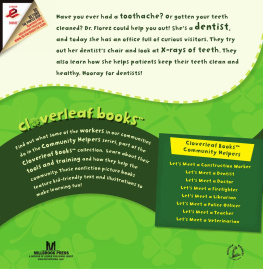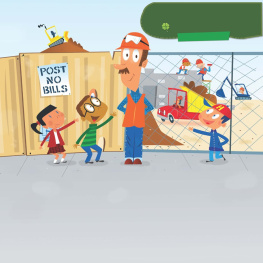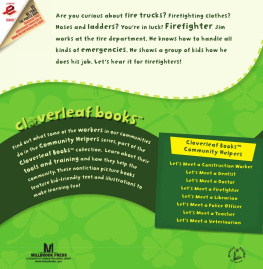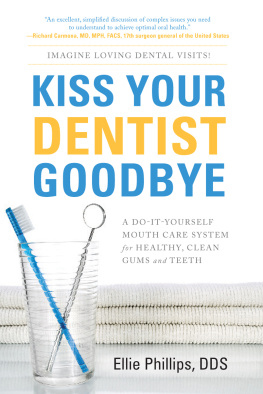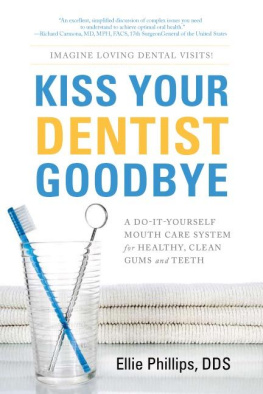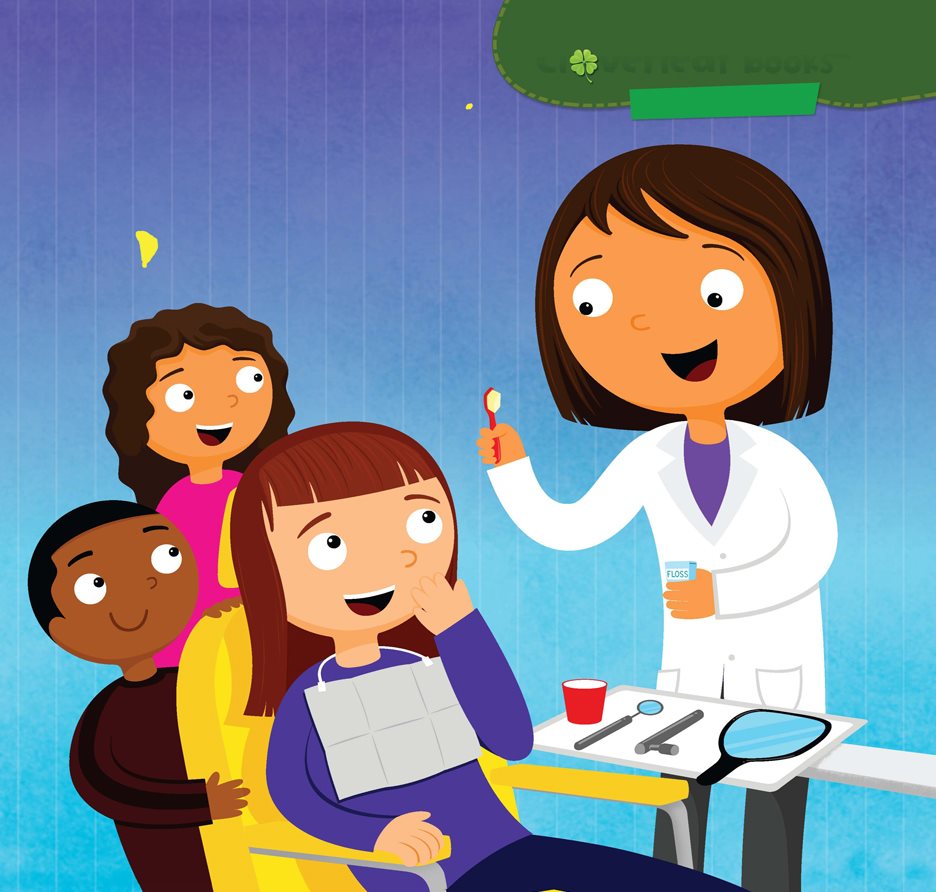cl verleaf books TM
Community Helpers
L ets M eet a
D entist
Bridget Heos
Illustrated by
Kyle Poling
With thanks to Dr. Erin Flood B.H.
Text and illustrations copyright 2013 by Lerner Publishing
Group, Inc.
All rights reserved. International copyright secured. No part
of this book may be reproduced, stored in a retrieval system,
or transmitted in any form or by any meanselectronic,
mechanical, photocopying, recording, or otherwisewithout the
prior written permission of Lerner Publishing Group, Inc., except
for the inclusion of brief quotations in an acknowledged review.
Millbrook Press
A division of Lerner Publishing Group, Inc.
241 First Avenue North
Minneapolis, MN 55401 U.S.A.
Website address: www.lernerbooks.com
Main body text set in Slappy Inline 18/28.
Typeface provided by T26.
Library of Congress Cataloging-in-Publication Data
Heos, Bridget.
Lets meet a dentist / by Bridget Heos ; illustrated by Kyle
Poling.
p. cm. (Cloverleaf books: community helpers)
Includes index.
ISBN 9780761390299 (lib. bdg. : alk. paper)
1. DentistsJuvenile literature. 2. DentistryJuvenile
literature. I. Poling, Kyle, ill. II. Title.
RK63.H46 2013
617.6dc23 2012023074
Manufactured in the United States of America
1 BP 12/31/12

TABLE OF CONTENTS
Chapter One
Four Hundred Teeth
Our class is on a mission! We want
to find out what a dentist does.
We visit a dentist named Dr. Florez
at her office.
Kids have twenty baby teeth. Those
teeth begin to fall out when kids
are about six years old. Over time,
thirty- two teeth permanent grow in.
I help people care for their
teeth, Dr. Florez says. She tells
us she sees about twenty patients
every day. Thats more than four
hundred teeth! No wonder it feels
crowded in here.
We ask how she cares for all those teeth. Dr.
Florez takes us to an exam room. First,
she puts on gloves and a mask. Those
help stop germs from spreading.
Dr. Florez lets Jasmine sit in the chair.
It moves up and down. Do you play in
the chair? asks Jacob.
No, says Dr. Florez. But Im glad you
think its fun.
Dentists are workers in the
community. A community is a group
of people who live in the same city,
town, or neighborhood.
Dr. Florez says her helper, Pam, cleans each patients
teeth. Pam scrapes gunk off with special tools.
A hygienist is trained to
clean teeth and help the
dentist.
Dr. Florez shows us a small machine she calls
a slow speed. She steps on a pedal. The slow
speed spins. Pam puts toothpaste on the tip. She
uses it to polish the patients teeth. Once the
teeth are clean, I take a look, says Dr. Florez.
Chapter Two
Attack of the Sugar Bugs!
Dr. Florez holds up a tiny mirror and something
she calls an explorer. These help me find
cavities. Cavities are holes in your teeth, she says.
She moves the explorer along the teeth. If it gets
stuck in a tooth, there is a hole.
She points to X- rays of teeth. They show cavities
between the teeth, she explains. They also show me
the parts of your teeth hidden below the gums.
Do cavities really come from bacteria pooping?
asks Robert. Most of us laugh. So does Dr. Florez.
Thats right, says Dr. Florez. Germs called
bacteria eat food left on your teeth. They leave
acid behind as waste, like poop. The acid makes
holes in your teeth.
Gross! we say.
Thats why I tell people to brush and floss every day.
Clean teeth dont have food for bacteria.
She shows us a poster about keeping teeth healthy.
Bacteria love to eat sugar left on
your teeth. So sugary snacks and
drinks can lead to more cavities.
When a tooth has a hole in it, I put in a filling,
says Dr. Florez. She shows us white and silver
fillings. The filling starts out soft. I push
it into the cavity. It hardens when it dries.
Ouch, says Olivia.
We give you medicine so it doesnt hurt,
says Dr. Florez. In fact, it feels better.
Bad cavities cause toothaches.
I f you dont have a dentist, ask your
school counselor or nurse about
free dental clinics in your area.
Dentists will clean your teeth and
check for cavities.
She uses a chart to keep track of each patients
teeth. She writes how many permanent
teeth young patients have. She also notes any
cavities.
Molars are the twelve teeth
grown- ups have that young kids
dont. They are in the back of the
mouth. The farthest back molars
are called wisdom teeth. They are
often removed. So many adults
have twenty- eight teeth instead of
thirty -two.
Chapter Three

